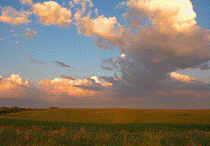North American Prairie Conference
Date of this Version
2004
Document Type
Article
Abstract
The bunchgrass prairies of the Palouse region in eastern Washington state and adjacent Idaho were almost completely converted to agriculture in the past century. Today, prairie habitat exists only on small remnants scattered across the landscape. The invertebrate fauna of these habitat remnants is poorly known, both in terms of species diversity and community composition. Pitfall traps baited with carrion were used to sample carrion beetles (Coleoptera: Silphidae) during June and July of 2003. Prairie remnants were selected based on size to test whether habitat area influenced the diversity of this important insect community. Three size classes were identified; greater than ten hectares, between ten and two hectares, and less than two hectares. Only remnants of high habitat quality based on previously established floristic criteria were included in the study. Eight species of carrion beetles were collected, most of which were in the genus Nicrophorus (the burying beetles). Species richness and Shannon-Wiener diversity were not significantly correlated with habitat area or perimeter to area ratio. Beetle abundance was strongly correlated with soil parent material. The potential significance of soil type was explored with multivariate analyses. Soil characteristics appear to exert a strong influence on carrion beetle communities.


Comments
Published in Dave Egan & John A. Harrington, editors, Proceedings of the 19th North American Prairie Conference: The Conservation Legacy Lives On..., University of Wisconsin-Madison, August 8-12, 2004 (Proceedings of the North American Prairie Conference, 19), Madison, WI: University of Wisconsin-Madison, 2004.